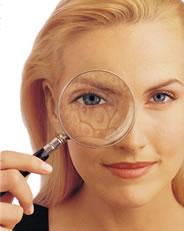 As a dermatologist, I study and treat conditions of the skin. As such, many people come to me for what they believe is a particular skin issue – rashes, color changes, etc. Some of these skin appearance issues can actually be signs and symptoms of an underlying internal medical condition.
As a dermatologist, I study and treat conditions of the skin. As such, many people come to me for what they believe is a particular skin issue – rashes, color changes, etc. Some of these skin appearance issues can actually be signs and symptoms of an underlying internal medical condition.
As the largest organ in your body, your skin can give off telltale signs of illness in your other organs just by its color, tone, and condition. I’d like to tell you about several of these signs that can alert you to a possible underlying health problem.
Your Skin: An Early Warning System for Disease
Your skin is more than just a superficial covering. It is a living, breathing, organ that interacts with every other part of you and reacts to what’s going on in the rest of your body. For example, when you’re undergoing upsetting life events your skin can reflect the mental stress in raised, red itchy bumps we commonly call hives.
A patient I had, I’ll call her Kathy, came in with a few white spots on her face and wondered what they were and if I could remove them. After careful examination, I looked at her hands and noted that, on the back of some of her fingers, she had small, red blister-like formations.
I asked Kathy if she had blood sugar problems but she wasn’t aware of any. Before I attempted to treat these spots, I first referred her to an internal medicine doctor who specializes in blood sugar disorders. It turns out that Kathy had type 2 diabetes and didn’t know it. These types of skin color changes and outbreaks can be a result of too high blood sugars.
Here are several other skin signs and the possible corresponding health conditions:
1. Shedding skin with large scale-like flaking. Not to be confused with “winter itch” and normal shedding or flaking of dry skin that can occur in colder months. This condition is more pronounced and can have a few explanations: Hyperparathyroidism, and/or too low thyroid both can cause dry, itchy skin that scales and flakes; ringworm infection – accompanied by the telltale red, itchy “ring” markings; psoriasis; Kawasaki disease; toxic shock syndrome.
2. Chronic psoriasis. People who have psoriasis have a high degree of inflammation throughout their body. Inflammation has recently been associated with the development of heart disease and arterial plaques.
3. Cold hands/feet. Hands and feet that get very cold and can turn colors ranging from red, to blue, to white, are thought to have Raynaud phenomenon. This condition is also associated with more severe autoimmune health issues like lupus, scleroderma or rheumatoid arthritis.
4. Jaundice. Yellowed facial skin, as well as the whites of the eyes, is most often associated with chronic liver, or sometimes even gallbladder, disease.
5. Itching. Skin that frequently itches intensely, that may be accompanied by changes in color, can be a sign of liver damage, kidney disease, or cancer somewhere in the body.
6. Red, painful skin of face, extremities, body. This may be a heralding skin sign of Sweet’s syndrome that occurs more often in middle-aged women. These skin changes are also usually accompanied by muscle and joint aches and pains and even conjunctivitis (inflammation of the inner lid pink tissues of the eyes). This type of skin change can also be a sign of possible cancer.
7. Abnormal freckling. People, who develop larger than normal, unusual freckling, can be at risk for neurofibromatoses – a disorder in which tumors grow around nerves. These freckles can measure more than 5 mm across (some can be as large as 15 mm). These nerve tumors are usually not malignant but, in time, can become malignant.
8. Yellowish eyelid plaque. This is commonly known as xanthelasma and often occurs in the inner eye, close to the nose. It occurs twice as much in women than men and can be a sign of elevated serum cholesterol.
9. Purplish rash on stomach. This skin sign is usually TTP – thrombotic thrombocytic purpura – can announce cancer somewhere in the body, especially lymphoma, or HIV, and/or lupus.
10. Plugged hair follicles. Can occur in hair, especially around the ears, and can be associated with lupus or other autoimmune conditions. The hair follicles become inactive and hair stops growing.
These are some of the more common skin issues that can be signs for underlying health conditions that dermatologists detect in their patients. There are, though, many more (see references below). Your skin’s appearance can be your body’s early warning system that some illness may be brewing in another part of your body.
If you have any of the skin signs noted above, don’t second guess them. See your dermatologist, or your internal medicine doctor, as soon as possible. The earlier you can be diagnosed with a particular ailment, the sooner you can start to receive treatment for it and get back on the road to good health.
Stay Well,
Jay Bracfeld, M.D.
Natural Health News
Skin Signs and Systemic Disease, http://dermnetnz.org/systemic/
Skin Signs of Illness and Disease, http://www.zimbio.com/SkinCare+treatments,+Acne,+Anti+Aging,+SkinCare+Products/articles/691/Skin+Signs+Illness+Disease
